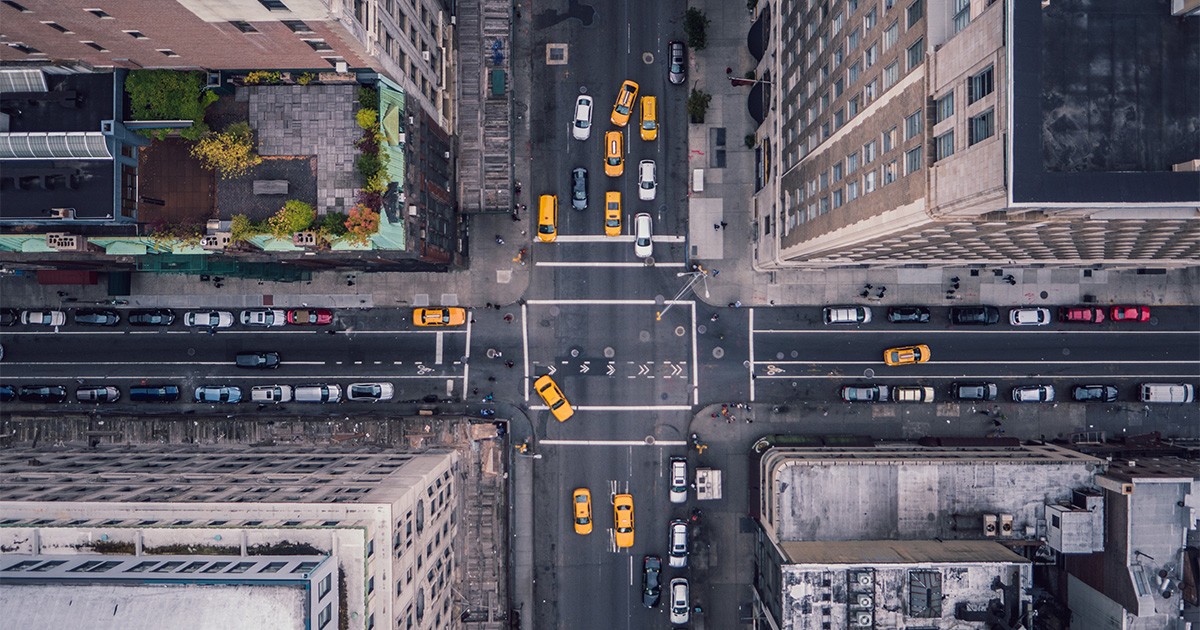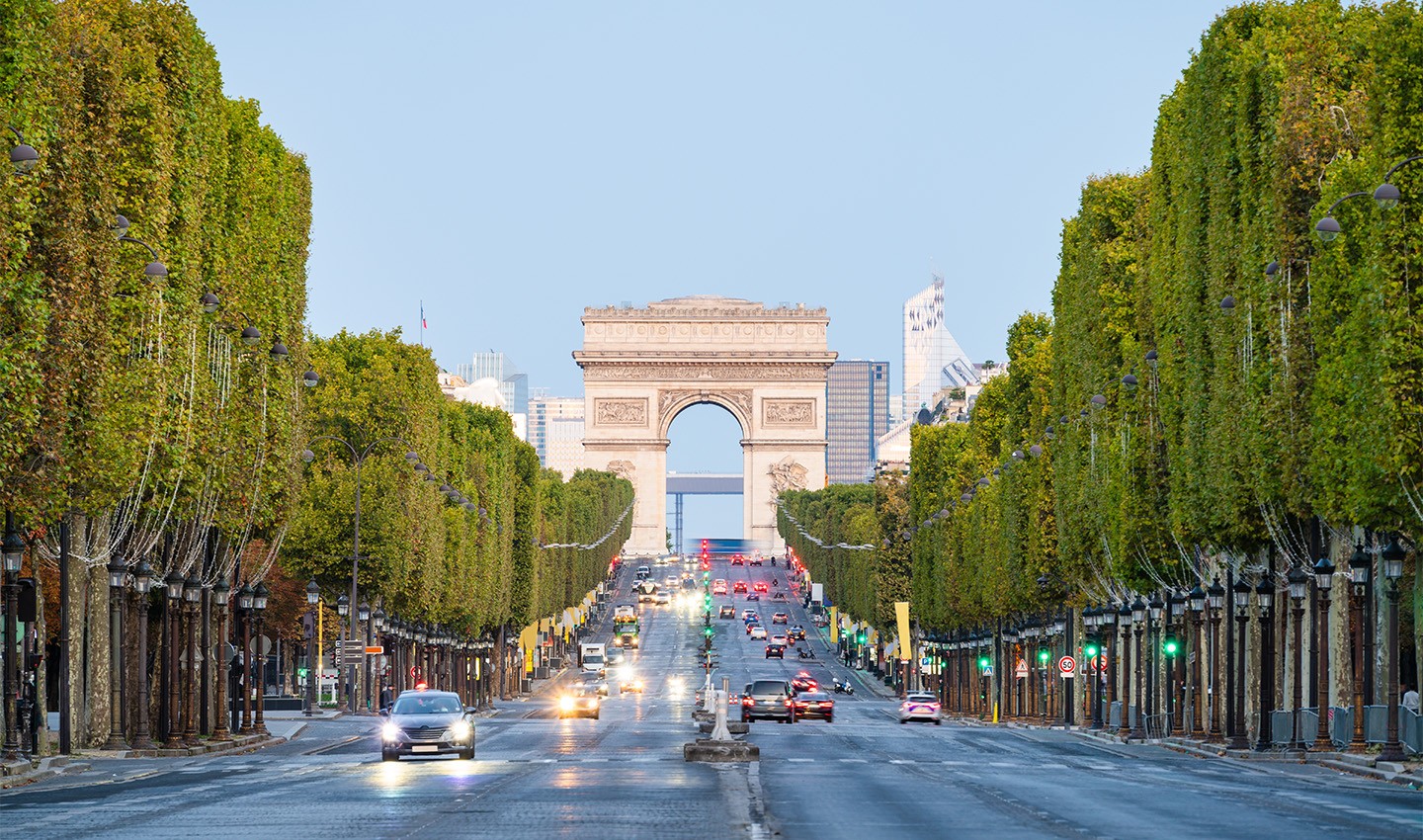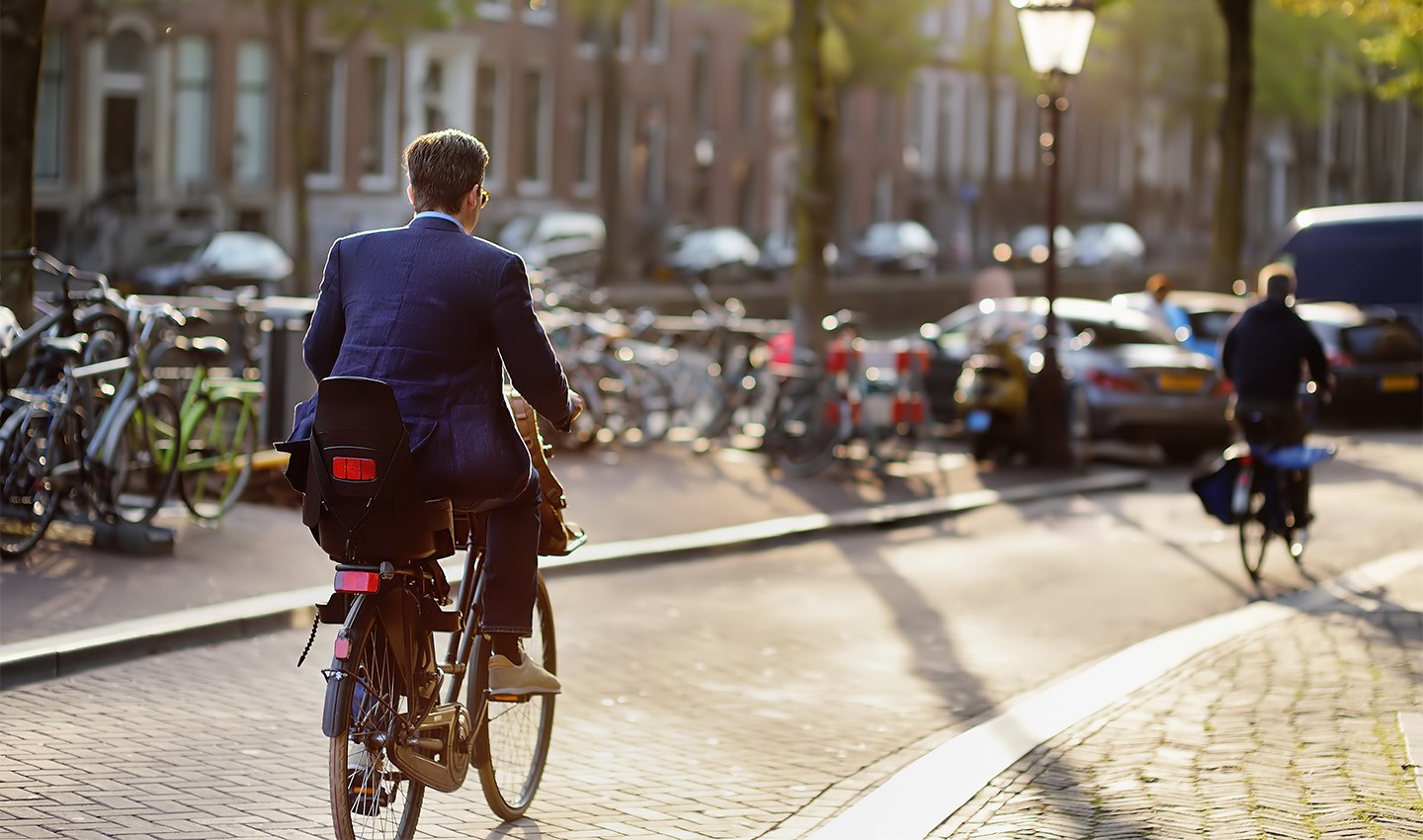Up-cycling streets: How the reallocation of space is driving change in our cities
&w=256&q=90)

Travel to any big city and you’ll see construction. New roads, new buildings. We are familiar with the building up. But what needs attention is the building down – changing existing infrastructure through the reallocation of space at eye level. Think about Paris’ plan to ban cars, freeing up space that can be (re)used, or up-cycled, for new purposes. Is this the overlooked challenge cities have been facing around the world?
Safety, comfort and sustainability are top goals for cities. The mobility industry is pushing for the same, as tech advancements enable the growth of EVs, ADAS and autonomous driving features. Yet the car itself poses a problem to inner-city neighborhoods. Cars take up space, are dangerous and many still emit harmful pollution. That’s part of the reason cities around the world are actively trying to balance growth with human-scale solutions.
Tara Goddard, Ph.D. working at Texas A&M University, focuses her research on transportation safety. We sat down with her to talk about new automotive tech, old urban systems and the potential future of cities.
“Tara Goddard
Ph.D., Texas A&M University
Talking about the U.S., Tara says, “I think it’s really going to be more about taking the space that we have, and changing who uses what part of it. We’re not getting rid of the car, or driving, but we need to radically re-think how it fits in, particularly in our inner communities.” This is the challenge many cities worldwide are facing.
(Re)allocating the valuable resource: Space
Once called the “new movement for the new city,” the idea of shifting space from car to people isn’t new. It’s been on the minds of urban planners since Jane Jacobs changed the way we look at cities, bringing the macro focus to the neighborhood level. But in recent years, the reallocation of space in urban communities has gained considerable traction. Reports such as the International Transport Forum’s Streets That Fit: Reallocating Space for Better Cities are more common, and we’re seeing transformative action happen on a larger scale.
Paris kicks out cars – Wales slows them down

Paris is the perfect example of a city seeking to reallocate space. Having been dominated by the car, the city has promised to ban them from crossing the center by 2024. As cars leave, the roads and parking spaces can be redesigned and used for bikes, scooters and pedestrians. Mayor Anne Hidalgo has set a host of people-first plans to back her goal of making Paris a “15-minute city” that is “100% cyclable,” including visions of community gardens, green spaces and areas to socialize and play. Change takes time and doesn’t come without some opposition, but the increasing number of cyclists in Paris is a sign that people are supporting the transition.
One solution, however, doesn’t fit all. In some areas, it’s harder to completely get rid of cars, like residential areas where people still need to drive in and out. Wales recently introduced a default 20mph (32kph) speed limit across the country in areas where there are lots of people. The goals are similar: increase safety, encourage walking and cycling, and improve health, well-being and sustainability. So the reallocation of space doesn’t have to be radical to start making a difference.
Signs of the future lie in the past

Now you could say, if a city like Paris can achieve such a transformation, any city should be able to as well. But Paris isn’t there yet. So let’s look to a city that has done it: Amsterdam. Many people don’t realize that Amsterdam was a car-dominant city in the 50s and 60s. Just like in all other cities, the car was seen as the future. However, as child deaths rose with the number of automobiles, heavy activism combined with political events drove Amsterdam to commit to change. And one street at a time, spaces were transformed to create the cycling capital of the world.
The great urban reallocation continues
From Colombia to Spain, here are five more cities that have reallocated space in five different ways. It is happening around the world – building down, using concrete as a canvas for creative re-interpretations of space that favor walking and cycling. While at the same time, innovations in safer and cleaner driving continue to soar within an expanding landscape of real-time data.
“Tara Goddard
Ph.D., Texas A&M University
The challenge of reallocating space includes finding smart ways of integrating new tech. To successfully improve everyday life in our cities, and help us all find our way in a changing world, city makers, automakers and mapmakers alike will have to establish new ways of working together for the collective benefit.
People also read
)
London is the world's slowest city: A closer look at the data
)
See the true environmental cost of inner-city congestion with TomTom Traffic Index
)
The changing shape of inner-city traffic: How COVID-19 changed the way we move in 2021
)
Safer roads in Southern Africa thanks to MAPIT’s ISA and TomTom ADAS Map
* Required field. By submitting your contact details to TomTom, you agree that we can contact you about marketing offers, newsletters, or to invite you to webinars and events. We could further personalize the content that you receive via cookies. You can unsubscribe at any time by the link included in our emails. Review our privacy policy.